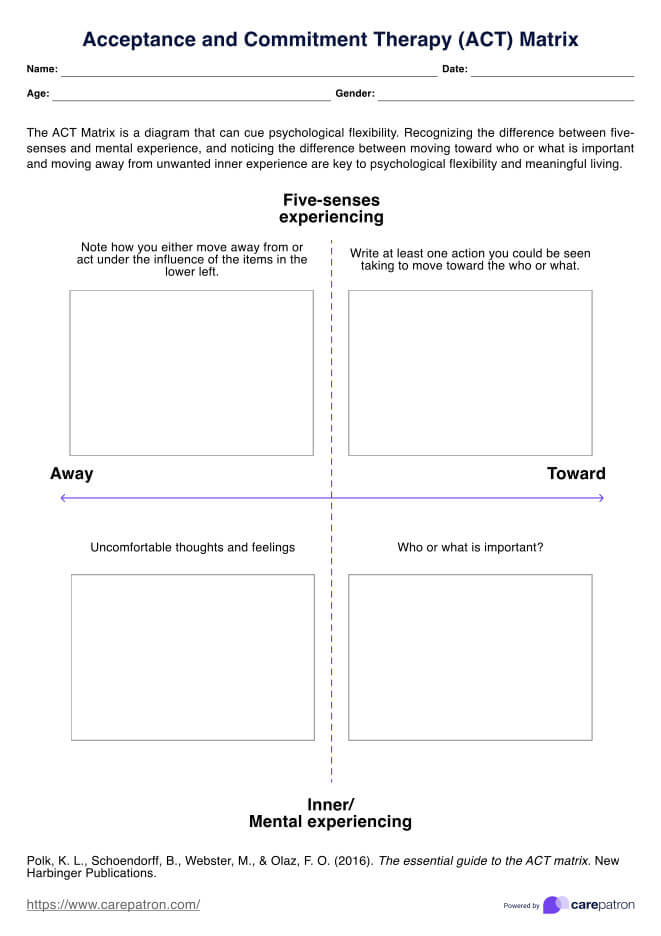Kevin Polk created the ACT matrix to make acceptance and commitment therapy easier to understand and apply.

ACT Matrix PDF
Explore the ACT Matrix PDF to help clients achieve valued living following the ACT matrix model.
Use Template
ACT Matrix PDF Template
Commonly asked questions
The ACT matrix is a simple diagram with two lines that help people focus on their values and actions. It shows how to deal with difficult feelings while moving toward what matters most.
ACT metaphors are simple, relatable stories or images used to explain complex ideas in therapy, like using the "passengers on a bus" metaphor to describe how to handle unwanted thoughts while staying focused on your destination.
EHR and practice management software
Get started for free
*No credit card required
Free
$0/usd
Unlimited clients
Telehealth
1GB of storage
Client portal text
Automated billing and online payments











